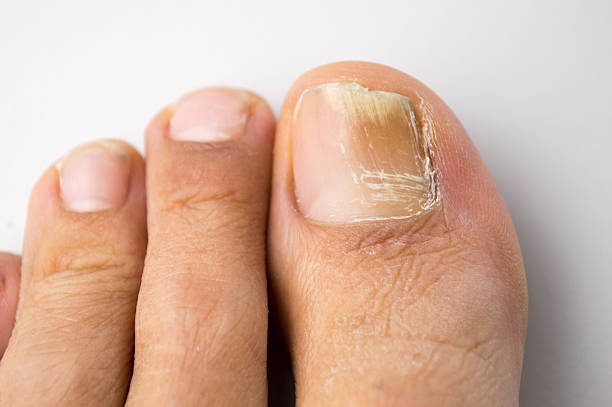
Toenail Fungus Remedies That Work: Evidence & OTC Solutions
Share
Toenail Fungus: OTC Remedies That Actually Help 🦶💅
Introduction
Onychomycosis (toenail fungus) is a common, often frustrating condition of the toenails, characterized by discoloration, thickening, brittleness, and sometimes discomfort. Because the fungus is located under the nail plate and in the nail bed, treatment is slow and requires persistence. In many cases, prescription systemic antifungals are recommended—but many people prefer starting with over-the-counter (OTC) options or adjunctive care. In this post, I’ll review what the scientific evidence says about OTC therapies, share fungal-resistant hygiene strategies, and introduce 13 nail-oriented products from PodiatryMarket.com you might consider.
What the Evidence Says: Limitations & Possibilities
- Topical antifungal lacquers (e.g. ciclopirox 8%) and newer agents (like efinaconazole) show some advantage over placebo in achieving mycological cure, but complete cures are relatively rare with monotherapy.
- In mild to moderate fungal involvement (less than ~50% of the nail), topical treatments have better chances; but because the nail grows slowly, therapy often must continue for many months.
- Some OTC antifungals (e.g. terbinafine, clotrimazole) may help in mild cases, but penetration into the nail plate is the limiting factor.
- Some “home” remedies (e.g. tea tree oil, Vicks VapoRub) have anecdotal or limited trial data; they may improve appearance but often do not fully eradicate the fungus.
- The nail’s structure is a significant barrier to drug delivery; many topical agents require combinations or enhancements (e.g. debridement, penetration enhancers) to achieve better effect.
Take-home: OTC and topical remedies can be part of a strategy—especially for early, mild cases—but they often require patience, consistent application, and may be most effective when integrated with good foot hygiene and occasional professional support.
Best Practices for Nail & Foot Hygiene to Support Treatment
To give any antifungal treatment the best chance, implement these foot care principles:
-
Trim / Debride
Gently file down (reduce thickness of) the affected nail (without cutting too close to live tissue) to reduce the barrier to topical agents. -
Clean & Dry Thoroughly
After washing your feet, dry completely, especially under the nail edge. Fungi thrive in moisture. -
Rotate Shoes / Use Drying Agents
Don’t wear the same pair daily; use foot powders or antifungal sprays in shoes. -
Wear Breathable, Moisture-Wicking Socks
Avoid tight, occlusive hosiery; replace damp socks mid-day if possible. -
Disinfect Tools & Surroundings
Sterilize nail clippers, files, baths, and foot mats to reduce reinfection. -
Be Patient & Monitor Progress
Toenails grow slowly (1–2 mm per month), so full visible improvement may take 9–12+ months. -
Seek Professional Help for Deep or Painful Infections
If the discoloration spreads, pain develops, or you have risk factors (diabetes, immunosuppression), consult a podiatrist.
13 Product Suggestions for Nail Treatment & Care
Below are 13 nail / polish / topical products (colors, treatments) available via PodiatryMarket.com that can be integrated into cosmetic or supportive nail care routines. Always follow product instructions, and consider them adjuncts, not guaranteed cures.
- Focus Fuchsia – tinted nail lacquer, can mask discoloration while permitting topical access
- Classic Cloud – neutral polish option for cosmetic appearance
- Mindful Mulberry – darker tint, aesthetic coverage
- Patient Pearl – light iridescent polish
- Peaceful Pink Coral – softer pink polish
- Perceptive Periwinkle – cool-toned polish
- Plucky Plum – deeper purple polish
- Remedy Red – more pigmented polish that might help visually blend imperfections
- Sassy Scarlet – bold red lacquer to disguise discoloration
- Lyrical Lilac – pastel tone for cosmetic appeal
- Hopeful Hot Pink – vibrant color option
- Total Two-in-One Top/Base Coat – clear base/top coat that may allow application of treatment simultaneously
- Hydration Clear Moisturizing Nail Treatment with Pentavitin – clear, hydrating treatment aimed at nourishing the nail plate
While most colored nail polishes are primarily cosmetic, Dr. Remedy's polishes include ingredients like tea-tree oil and garlic extract that offer antifungal support—so they help inhibit fungal growth when used consistently. Moreover, the Total Two-in-One Top/Base Coat and Hydration Clear Nail Treatment are more directly supportive of nail health: they seal, hydrate, and reduce brittleness, making them important adjuncts in a comprehensive nail care regimen. Importantly, even after applying the polish, these formulations are oxygen and moisture permeable, so topical antifungal or moisturizing treatments can still penetrate.
✅ Toenail Fungus Treatment Checklist
- Thin the nail (file or trim gently)
- Apply topical antifungal nightly (medication or OTC option)
- On alternate nights, use Hydration Clear moisturizing treatment
- Use colored nail polish — it’s moisture & oxygen permeable, so treatments can still reach the nail
- Use the Two-in-One Base/Top Coat for smooth layering
- Rotate footwear & wear clean, breathable socks daily
- Once a month, take a photo to monitor improvement
Risks, Red Flags & When to Escalate
- If discoloration spreads or involves the nail matrix
- Pain, swelling, or signs of secondary bacterial infection
- Underlying health conditions (diabetes, circulatory disease, immunosuppression)
- Lack of improvement after 6–12 months of consistent therapy
In such cases, systemic (oral) antifungals or device-based treatments (e.g. laser) may be considered under medical supervision.
Conclusion
OTC and cosmetic nail treatments can help improve appearance, support nail health, and in mild fungal involvement they may contribute to fungal suppression. But because of the structural challenge of penetrating the nail plate, full eradication often requires persistence, supplementary strategies, and sometimes medical therapy. By combining evidence-based hygiene habits, awareness of product limitations, and realistic expectations, you give yourself the best chance to reclaim healthy, attractive nails.
Your toenails deserve care, patience, and smart strategies. 👣
Dr. Ahmad Rashid, DPM
Board-Certified Podiatrist & Founder, PodiatryMarket.com
Disclaimer: This post is educational and not intended as a substitute for medical advice. Consult your healthcare professional for personalized recommendations.
